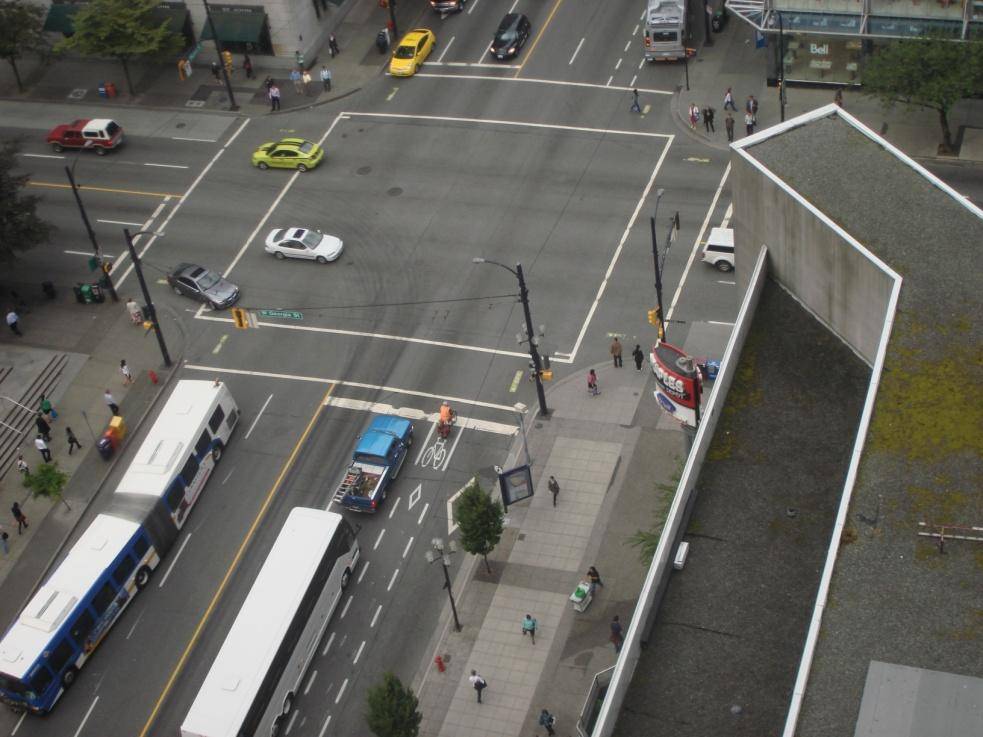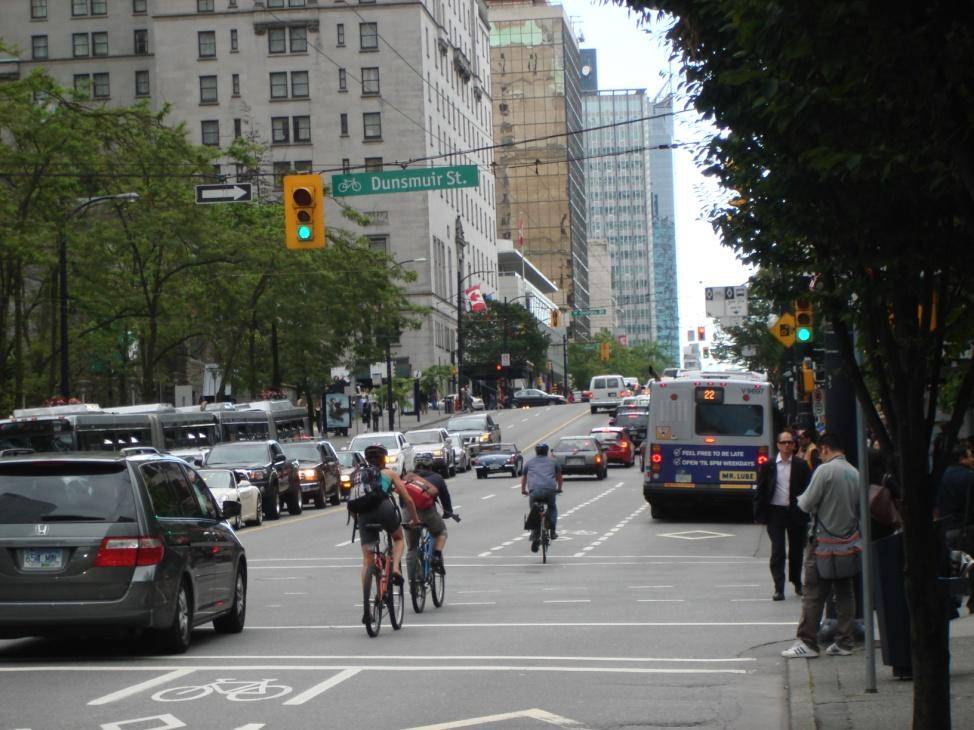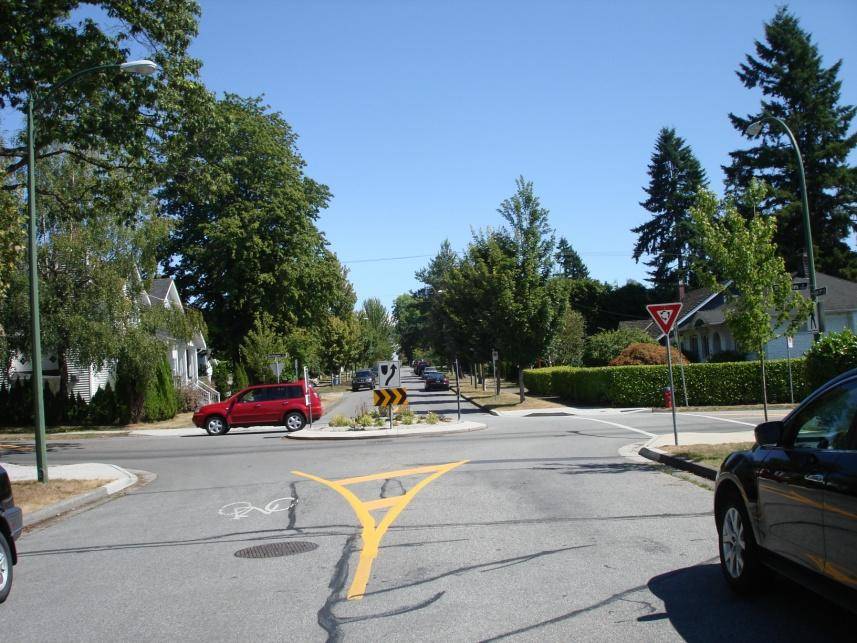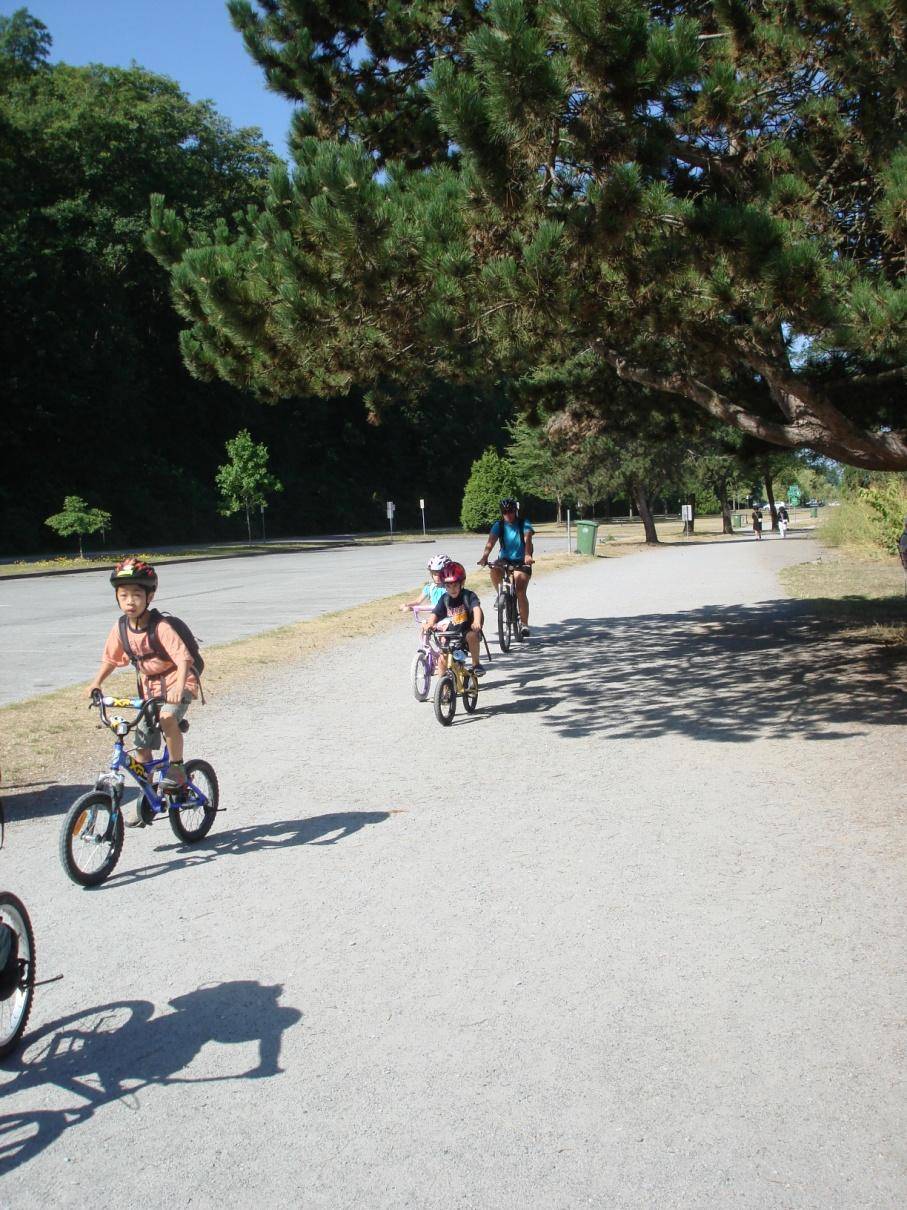
“Traffic Calming” was a concept most people had never heard of in 1995 when a report on the topic was published by the American Planning Association. I know this because I authored this report. It was a radical idea that streets should not be the exclusive and rightful domain of automobiles and many people did not hesitate to tell me I was nuts for advocating for streets for people not cars.
Happily things have been changing since 1995 and we are beginning to build healthier, less expensive, and more livable cities and streets.
I just returned from Vancouver, B.C. for the annual meeting of the Institute of Transportation Engineers (ITE). I think we have turned a corner. ITE used to focus pretty exclusively on building roads for vehicles. Now the focus is very multi-modal with lots of sessions on bicycle infrastructure, roundabouts, even Safe Routes to School.
I took the Skytrain from the airport to downtown Vancouver and arrived within three blocks of my hotel in 25 minutes for under $4. Getting around Vancouver is easiest via transit, walking, or biking. They even have bus ferries that connect parts of Vancouver separated by the ocean.
Vancouver is a great city to for seeing what can be done to promote multi-modal transportation with excellent transit, extensive bicycle infrastructure, well connected pathway systems, and high density living that feels much less urban than similarly dense U.S. cities with lots of green space and parks.
From my hotel room I could watch the street and intersection below as buses, bicycles, pedestrians, and cars all shared the street.
A few highlights of what Vancouver is doing follow:
- EcoDensity — a bold vision being developed in Vancouver that insists we can build communities that are green, livable, and affordable. EcoDensity says it can:
- Make walking, biking and transit easier for more people
- Allow for new green systems that reduce and better use energy, water, and materials
- Introduce urban agriculture to reduce “food miles” (the distance it takes to get food to our homes)
- Create more complete communities by having housing diversity within walking distance of shops and services, and accessible to transit. (Source: http://www.vancouver-ecodensity.ca
- Cycling for Everyone — Transport 2040 is a bold plan from Vancouver’s transportation agency — TransLink — which includes a goal that most trips in Vancouver will be made by walking, bicycling, and transit in 30 years. Transport 2040 includes an aggressive plan for improving bicycling. The plan identifies “target markets” for increasing cycling and recognizes that about 25% of Vancouver’s adult population is already bicycling; however, 40% of the population wants to bicycle but are deterred by stress and safety concerns. “The Regional Cycling Strategy is informed by the realization that cycling infrastructure as it has been designed is attractive only for a limited number of people who comfortable riding in vehicular traffic. Programs and facilities that minimize motor vehicles traffic stressors….are more likely to achieve significant increases in cycling and cycling safety.” (Source: Cycling For Everyone Executive Summary.) Strategies in the plans call for making streets safer for cycling; developing bikeways separate from streets, building a cohesive bikeway network, along with education and encouragement programs.
I had the privilege of spending a day bicycling Vancouver and explored the some of the city. The results so far are impressive. People were bicycling everywhere I went, both on and off the roads.

Vancouver is converting its streets to create a complete system for bicycling. I was able to bicycle throughout the city without referencing the city bike map (that folds into the size of a credit card) without getting lost. The system is very well marked and understandable. To accomplish this Vancouver is putting in mini-traffic circles instead of Stop signs. They have a Green Streets program and residents can adopt a mini-traffic circle to landscape.

- Creating a Sustainable Future — But perhaps the most exciting evidence I witnessed of the future change in our mobility was dozens of kids participating in summer days camps focused exclusively on teaching the kids to bicycle. This was not a public program, but a private day camp called Pedalheads. I passed numerous groups of children ranging in age from around 4 to 10 joyfully pedaling along in a group with camp counselors. I should also add that British Columbia has a law that requires bicycle riders wear helmets and the vast majority of cyclists do wear helmets.

- Sharing the Road — For those who are dismayed by the willful and all too common disregard for traffic laws by some cyclists, I also witnessed a cyclist being pulled over by an officer for illegally crossing the street midblock and bicycling the wrong way in the bike lane. The majority of cyclists were law-abiding.
All the pieces are there in Vancouver to support and facilitate shifting modes from driving all the time to using many modes:
- Infrastructure for all modes
- Appropriate land-use, density, and design
- Interconnection of modes, land-use, and infrastructure
- Social Marketing – encouragement for behavior change
Vancouver’s stated goal of reducing its carbon footprint and creating a more livable and affordable future looks to be well on the way to reality.








